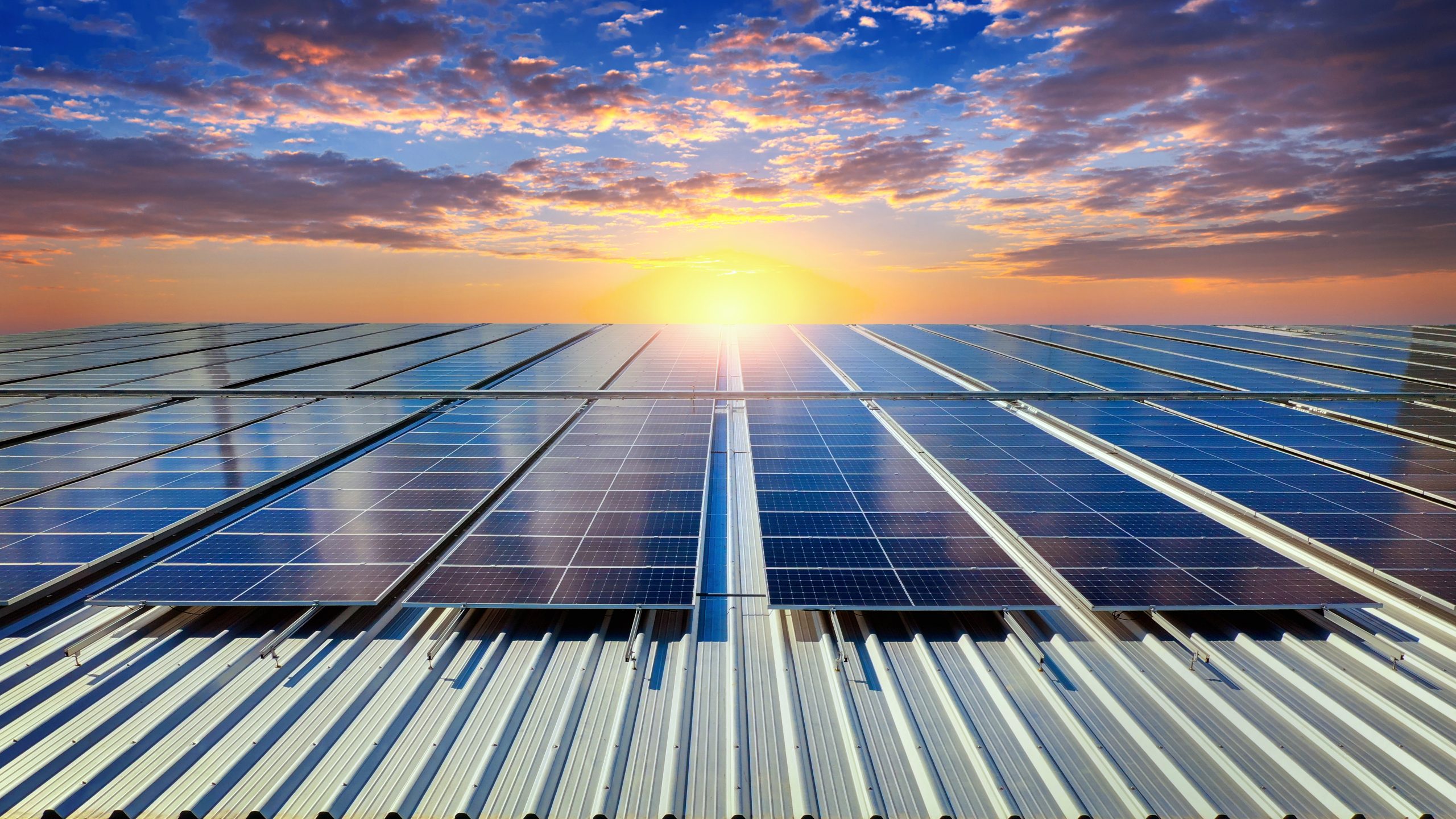Germany’s Solar Industry Crashes and Burns: Is There a Light at the End of the Tunnel?
Germany is a global leader in renewable energy, specifically solar power. However, the country’s once-thriving solar industry is now in a declining trend. Policy changes, more competition, and falling prices have all contributed to a big drop in the industry. Solar energy supply is a significant factor in the country’s economy and environment.
Almost every single major German producer of solar systems has gone insolvent. Investors are flocking away in droves because of canceled subsidies. Additional installations are hardly taking place. The first installations are now being decommissioned, and Germany’s share of solar power has fallen below 6%.
While it has been a setback that Germany’s solar power fell, some experts believe there is still light at the end of the tunnel. Despite the challenges, German electricity has a long history of renewable energy such as nuclear plants or nuclear power, wind turbines, and solar energy industry. It is well-positioned to lead the energy transition to a low-carbon future which means lesser greenhouse emissions.
The Significance of Germany’s Renewable Energy and Solar Energy Supply Struggles
One of the most significant green energy barriers is the high cost of producing solar power compared to other energy sources. There are also challenges with integrating solar power into the grid and the need for storage solutions to ensure a reliable energy supply.
Furthermore, the German solar industry has been challenged by competition from countries with more favorable policies and incentives even a single major German producer struggled. China, for example, has emerged as a major player in the solar industry, with its companies dominating the global solar panel market.
German Solar Boom Ended Abruptly: What Went Wrong with the New Solar Capacity?
Several factors catapulted the German solar boom crashed. The cost of solar energy was a significant factor. The cost of photovoltaic panels has been steadily declining, but the cost of solar power production systems has remained at plunging prices due to labor and energy infrastructure costs. This reduced the competitiveness of solar energy in a market dominated by cheap fossil fuels, particularly Russian natural gas.
Grid operators in Germany have also contributed to the industry’s difficulties. As solar systems became more prevalent, grid operators found it increasingly difficult to keep the power grid stable. The fluctuating output of solar power made balancing supply and demand difficult, resulting in frequent power outages.
Furthermore, Chinese manufacturers pose a significant threat to the German solar industry. Chinese solar panel manufacturers were producing panels at significantly lower costs, making it difficult for German manufacturers to compete with the whole world trade organization.
In recent years, Germany has added large amounts of wind capacity as well as coal-fired plants to its energy mix, making solar energy less competitive due to the lower cost of these sources. Although Germany celebrated reaching a remarkable level of renewable energy use, half of that came from biomass burning which is not carbon dioxide neutral or even cleaner compared to gas.
This was just one sign that their status as Germany’s green revolution might have been overstated. As a result, many German companies found it difficult to keep up with cheaper foreign imports and were eventually forced to shut down their factories.
According to research by an agency in Europe, between 2010 and 2020, the installed capacity of solar PVs (photovoltaics) increased dramatically worldwide by nearly 600%; however, during that same time period in Germany, their addition was only around a 100% increase.
Even though they were already leading the world in terms of active solar capacity, other countries such as China took advantage and managed to reach massive levels of added capacity much faster than them, – becoming dominant players in the industry thanks to government support and investment. All of these struggles led to decreased confidence for both businesses and investors, which greatly affected the German economy.
The impact on solar jobs has been particularly devastating. Many factories have been forced to shut down, leaving thousands of workers unemployed. Additionally, the government’s lack of support for renewable energy has been one of the many reasons why the German solar boom crashed.
The decline of the solar industry in Germany can be traced back to the natural turn towards cheaper and more efficient methods of power production. Unfortunately, this change happened too quickly for many German companies to adapt. As a result, they lost ground to other countries that had already invested heavily in solar technology.
This crash of Germany’s once-great solar industry has also had environmental consequences. Without investment in renewable energy sources like solar power, the country must rely on traditional forms of energy production such as coal- or gas-fired power plants, and Russian gas which relies on fossil fuels. These methods are not only harmful to the environment but also contribute significantly to climate change.
Challenges and Obstacles of the German Solar Power Production Systems
The German solar industry faces a number of challenges and roadblocks that make it difficult to develop a profitable and sustainable industry. One of the most significant challenges is the intermittent nature of solar power. Solar panels only generate electricity during sunny weather, and their output varies greatly depending on weather conditions.
Another issue is the requirement for storage solutions to store electricity. As solar power becomes more common, the need for better demand management becomes more pressing. Energy storage systems are required to ensure that the electricity demand is proportionate to the new capacity. Gross electricity production or total electricity production from solar systems should meet the kilowatt hour usage of German consumers.
The high cost of labor and energy infrastructure in Germany is another major impediment to total electricity production. Because of the high labor costs in Germany, the cost of producing solar energy is much higher than in countries with lower labor costs.
The rise of Russian gas has affected grid operators’ attitudes towards renewables; these obstacles make it challenging for small and medium-sized firms to keep up with established players in the market.
What Could the German Government Do To Upscale Germany’s Green Revolution?
The government has proposed several solutions and strategies to address the challenges confronting the German solar industry. One of the proposed solutions is to increase R&D investment to drive innovation in solar energy production. This would contribute to lower solar energy production costs and increased solar panel efficiency.
To address the intermittent nature of solar power, the government has proposed increasing the use of energy storage systems. Energy can be made available when the sun is not shining by storing excess energy generated during daylight hours, making solar energy more reliable and consistent.
Furthermore, the government has proposed reducing the cost of solar energy production by streamlining the approval process for new solar installations and removing bureaucratic barriers. This would contribute to lowering the cost of solar energy production in Germany and making it more competitive in the global market.
Germany’s solar industry has reached a significant status, thanks to excellent innovation and remarkable investment in clean energy production. However, despite all efforts, the industry seems to be crashing and burning due to increased production costs and expensive solar panels.
According to recent research by a government agency, the cost of producing solar energy in Germany has reached a massive €1 billion. This makes it hard for solar power to compete with traditional sources such as coal and gas.
To keep up with this challenge, the German government has proposed several solutions that aim at increasing efficiency, reducing production costs, and making the solar industry more competitive globally:
- One solution is to increase the use of energy storage systems, which will allow energy to be made available even when there is no sunlight. This will make solar energy more reliable and consistent, thus attracting more investments.
- Additionally, the government plans to streamline the approval process for new installations and remove bureaucratic barriers that hinder progress. These solutions offer hope for the industry’s future, but their effectiveness remains to be seen.
Innovation, investment, and policy are critical factors shaping the future of Germany’s solar industry. The role of innovation cannot be underestimated since better technology means more efficient solar panels and reduced production costs.
Investment is also crucial, as it attracts capital and increases confidence among investors who see potential in the sector. On the other hand, a favorable energy policy creates an enabling environment where companies can thrive without being burdened by unnecessary regulations.
Conclusion: Germany’s Solar Industry Crashes and Burns.
The struggles behind why German solar power fell are the result of a number of factors that have gradually eroded the industry’s competitiveness. Significant barriers include the high cost of labor and energy infrastructure, the intermittent nature of solar power, stiff competition from Chinese manufacturers, and other sources of German electricity produced, which include nuclear power plants and electricity from gas pipelines.
So, how does Germany’s solar energy industry at present?
Despite the significant struggles that led to the collapse of Germany’s solar industry, the country is still making strides in its renewable energy efforts. Presently, Germany’s solar industry is experiencing a steady increase in gross electricity production, providing affordable solutions, and driving the adoption of renewable energy globally.
However, the industry still faces significant challenges, and the outlook for 2023 remains uncertain. The high cost of labor and energy infrastructure, coupled with the intermittent nature of solar power, continue to pose significant barriers to growth.
Moreover, stiff competition from Chinese manufacturers and other sources of electricity production in Germany, such as nuclear power plants and gas pipelines, remains a threat to the industry’s progress.
Despite these challenges, Germany’s solar industry has the potential to leverage its existing local production capabilities and become a major contender in the global solar PV supply chain, alongside China.
Achieving this goal requires the creation of a competitive environment that allows European manufacturers to compete with Chinese firms on cost, quality, and sustainability.
Overall, the future of Germany’s solar industry is uncertain but promising, and it’s an exciting development to watch as the country continues to invest in renewable energy solutions and strategies. With the right investments and policies in place, Germany has the potential to become a leading player in the global transition to sustainable energy.



